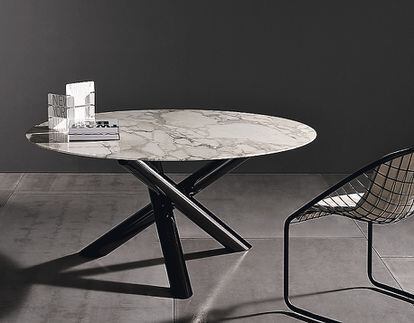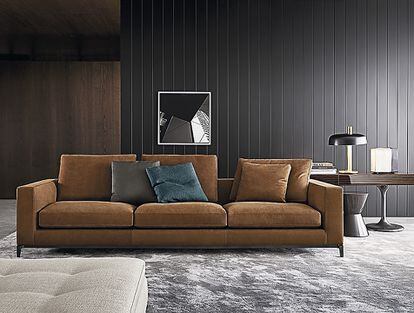The designer Rodolfo Dordoni, who died last August at the age of 69, was always clear about the coordinates of his profession. “Rational, very rational. But rational does not mean squared, but logical. Use your brain. Be consistent. “Design is a job: connecting production and market.” With these words he defined in 2020, in an interview with ICON Design, the personal style that had led him to conquer an envied and enviable position: that of artistic director of Minotti, a flagship of high-end Italian furniture.
Born in Milan, Dordoni began his cursus honorum orthodoxly, at the School of Architecture of the Milan Polytechnic, which is the university from which several generations of designers have emerged because, not in vain, it was there where the notion of design that continues to prevail in Italy was born: a mixture of playful spirit and practical vocation, of engineering and poetry, of art and sociology. Dordoni, who in person took away the stardom in which many of his professional colleagues live, understood his job from a sensible perspective. He was commercial in the good sense of the word: his designs sold because it was what the public needed.
He began working with Minotti in 1997, and a year later he assumed the artistic direction and coordination of its collections. In the world of furniture, this position is anything but decorative: it consists of supervising all designs, our own and those of others, to introduce them into the house's own style, and also ensuring their long-term survival of the company: their tasks They range from redesigning a sofa that already exists to make it more sustainable to coordinating the renovation of the brand's own stores or designing the company's offices. Dordoni did all this during a quarter of a century in which Minotti, one of the legends of the design Italian, he knew how to adapt to new times and new audiences. Meanwhile, he had time to found his own studio, Dordoni Architects (with Alessandro Acerbi and Luca Zaniboni)from where he helped lay the foundations of what is today called international luxury: calm and friendly, but rigorous, full of exquisite and practical details.


His designs remain for posterity., especially its sofas, the specialty of Minotti and, over the years, also of Dordoni. “Minotti was a university, I learned a lot,” he recalled in the same interview. “Even today, when I work for other companies, I notice it. I like to undertake projects with depth, and I suffer if I perceive that it is taken lightly. “It's not what I've learned.”
Over the years, it created best-selling models such as the Andersen, a refined and ultra-ergonomic variation, without losing geometry, of the traditional elevated sofa. Or Yang, which fled from continuity and proposed an alternation of volumes and spaces with an allergy to boredom. They are subtle but effective designs, which require seeing beyond the gray that, for designers in the sector, is like black for great couturiers: a litmus test, a way to check if an idea really works. “I have learned that a pretty shape is not enough,” he declared in 2020. “That the image is not enough, the important thing is what you don't see. “That's what I mean when I talk about quality.”
Generous with the press, always accessible and polite even in the hustle and bustle of the Mobile Show, in recent years it has multiplied its creative activity and signed recent and instant classics such as Roger and Dylan, two sofas that, with their rigorous and technological voluptuousness, are a synthesis of the virtuosity to which today's design aspires. Call it commercial nose. Or, perhaps, a singular form of humanism.
You can follow ICON on Facebook, x, instagramor subscribe here to the Newsletter.
Subscribe to continue reading
Read without limits
_
#legacy #Rodolfo #Dordoni #designer #cultivated #luxury #common #sense #pretty #shape